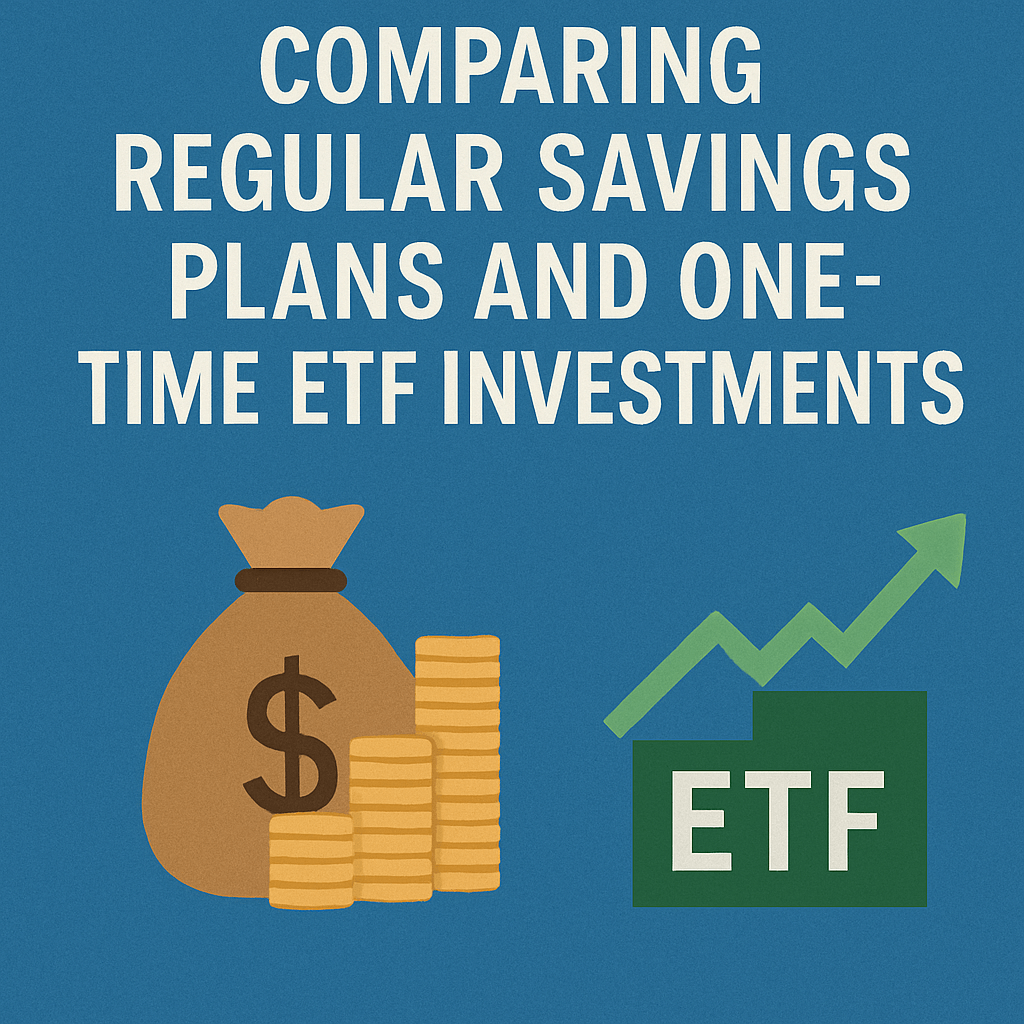Comparing Regular Savings Plans and One-Time ETF Investments

When it comes to investing in Exchange Traded Funds (ETFs), individuals often face the dilemma of choosing between a regular savings plan and a one-time investment. Both methods have their unique advantages and challenges, and understanding these can lead to informed financial decisions.
ETF One-Time Investment vs. ETF Savings Plan
The debate surrounding the optimal ETF investment option often leads to confusion. The crux of the matter lies in timing: stock market fluctuations can occur swiftly, and the moment you decide to invest can significantly impact the performance of your portfolio. If you invest at market peaks, you may endure a prolonged recovery period, while purchasing during downturns may offer the potential for substantial future gains.
This has led to considerable analytical discourse among investment experts, many of whom delve into the intricacies of market cycles and timing precision. However, the reality remains that both one-time and ongoing investments can be executed independently or in tandem. For example, an investor could commence with a one-time investment followed by regular contributions.
The Cost-Averaging Effect
One widely referenced strategy is the average cost effect, or cost-averaging effect. This technique advocates for the division of a larger sum into smaller, periodic investments, thereby mitigating the risk of market volatility. Investing through a savings plan is often suggested to keep transaction costs manageable.
Despite its popularity, some prominent financial analysts argue against the purported advantages of the cost-averaging effect. For instance, if an investor allocates €10,000 immediately, they incur market risk from the outset but also begin earning potential returns right away. In contrast, spreading the investment over smaller amounts means the investor will likely miss out on gains from full market exposure during the investment period.
Experts with a quantitative background note that these conclusions, while based on historical data, may not reliably forecast future market trends. Many passive investors may thus find the findings less applicable to their situation, raising a need for practical solutions rather than purely academic discourse.
Incremental Investment Strategies
A psychologically comforting approach for uncertain investors is to break down their investment into increments. For example, if a total of €30,000 is earmarked for investment, it could be divided into three parts of €10,000 each, invested at intervals of one month. While this strategy may reduce the risk of buying at an inopportune time, the outcome—subsequent gains or losses—cannot be predicted in advance.
In deciding the appropriateness of such an incremental investment strategy, investors should consider factors such as brokerage fees. Executing multiple smaller orders may lead to higher transaction costs, depending on the broker’s pricing model. Some brokers offer fee-free trades or flat-rate charges, which can significantly affect overall investment efficiency.
Evaluating Costs by Entry Strategy
Investors must recognize that higher frequency orders can produce cumulative costs exceeding those associated with a single larger investment. Depending on the broker, costs can vary drastically; for instance, some charge up to €40 per order for an investment of €10,000. Thus, selecting a broker with favorable execution fees is essential, especially for investors planning to build a diversified ETF portfolio.
Additionally, some brokers now offer high initial rates for ETF savings plans, which can be advantageous for those looking to invest large sums right away. Following the initial high investment period, the savings rate can often be adjusted with no extra fees, an attractive feature for many investors.
When to Opt for a Savings Plan
A savings plan is particularly beneficial when capital is limited for a one-time investment. As it allows for systematic accumulation from regular income, even during bearish market phases, this approach can prove wise as it provides the potential for cheaper shares at low prices. The combination of a cost-averaging effect with compound interest helps lay the groundwork for long-term wealth generation.
Entry Strategies for Investment
- One-Time Investment: Optimal for individuals with a lump sum available.
- Investment in Installments: Suitable for those uncertain about market timing, allowing them to spread the investment over time.
- ETF Savings Plan: Ideal for those lacking a lump sum, as it promotes disciplined investing over time.
Concluding Thoughts: Start Investing Early
Ultimately, most individual investors often do not have the luxury of choosing solely between a one-off investment and a savings plan; many will naturally gravitate toward one strategy. The key takeaway is that diligent savers are unlikely to suffer disadvantages—especially when selecting a brokerage with minimal fees. Regardless of the chosen method, starting your investment journey early is critical to capitalizing on market opportunities.
Checklist for Getting Started in ETF Investing
- Select investment strategy
- Define entry strategy
- Select a broker
- Transfer funds to the brokerage account
- Establish an order or ETF savings plan
In conclusion, whether opting for a savings plan or making a one-time investment, being informed about strategies, costs, and market mechanics plays a crucial role in investment success.